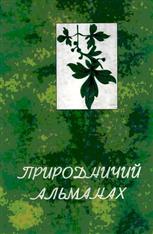COMPARATIVE ANALYSIS OF THE FUNCTIONAL STATE OF THE CARDIOVASCULAR SYSTEM IN FEMALE STUDENTS OF DIFFERENT SPECIALTIES
Abstract
The aim of this study is to assess the functional state, adaptive capacity, and regulatory mechanisms of the cardiovascular system of the cardiovascular system in female students of various specialties. A study of the functional indicators of the cardiovascular system of the body was conducted in 210 female students from the Faculty of Primary Education (group A) and the Faculty of Foreign Languages (group B). Physiometric indicators of hemodynamics were measured; calculated Robinson index values and the adaptive potential of the cardiovascular system. Analyzing the value of the Robinson index in the participants of both groups, it was found that in group A the Robinson index was above average, which indicates the level of reserve capabilities of the cardiovascular system above average, and in group B the level of reserve capabilities of the cardiovascular system and systolic heart work is below average. In group A, a significant number of subjects with a pronounced effect of the parasympathetic department of the autonomic nervous system and a parasympathetic type of regulation (55%) was found, which positively affects their functional capabilities of the body. Data analysis showed the presence of a significant number of female students in group B with a pronounced effect of the sympathetic branch of the autonomic nervous system and a sympathetic regulation pattern (58%), which negatively affects the aerobic capabilities of the heart, functional capabilities, increases the risk of cardiovascular overload, which in the future, in the absence of lifestyle correction, can lead to pathologies and diseases of the cardiovascular system. Comparative analysis of data on hemodynamics indicators, functional capabilities of the cardiovascular system, adaptive capabilities, aerobic capabilities of the heart, and the level of functional state of the circulatory system revealed significantly better indicators in female students in group A, which suggests a positive impact of the academic discipline profile of their specialty.Such results give reason to say that the presence of creative disciplines in the lives of female students in group A has a positive effect on the functional state of the cardiovascular system. In order to improve the functional state of the cardiovascular system of female students, especially group B, it is necessary to introduce health-saving technologies (including art therapy).
References
2. Бен Отмен М, Нечитайло ЮМ. Діагностична цінність функціональних проб у визначенні стану кардіореспіраторної системи. Здоров’я дитини. 2022;17(2):95–98. DOI: https://doi.org/10.22141/2224-0551.17.2.2022.1501
3. Волошин ОС, Гуменюк ГБ, Волошин ВД. Оцінка адаптаційних можливостей осіб юнацького віку з різним рівнем ефективності функціонування серця. Здобутки клінічної і експериментальної медицини. 2022;4:83−88.
4. Головченко ОІ. Стан функціонально-резервних можливостей серцево-судинної системи студенток з різним рівнем рухової активності. Педагогіка, психологія та медико-біологічні проблеми фізичного виховання і спорту. 2021;8:25–29.
5. Горбань Д, Юсупова О. Функціональні можливості кардіореспіраторної системи в осіб юнацького віку у період пандемії Соvіd-19. Нотатки сучасної біології, 2022;1:63–68.
6. Коц ВП, Коц СМ. Характеристика функціональних показників серцево-судинної системи студентів. Біологія та валеологія. 2015;17:78–84.
7. Коц СМ, Коц ВП, Коваленко ПГ. Динаміка показників функціонального стану серцево-судинної системи дітей шкільного віку під впливом корекційного комплексу. Природничий альманах (біологічні науки). 2021;31:35–44.
8. Коц СМ, Коц ВП, Коваленко ПГ. Функціональний стан серцево-судинної системи дітей шкільного віку. Грааль науки. 2022;12-13:220–226. https://doi.org/10.36074/smpsbr:at.ed-1.03
9. Коц СМ, Коц ВП, Коц ВВ. До питання профілактики негативних наслідків перевтоми. Prospects of modern science and education: V Міжнародна науково-практична конференція. Стокгольм, 07-10 лютого, 2023. Стокгольм, Швеція, С. 57–63. https://isg-konf.com/uk/application-of-knowledge-for-the-development-of-science/
10. Коц СМ, Коц ВП. Оцінка функціонального стану серцево-судинної системи дітей 11-12 років. Природничий альманах (біологічні науки). 2023;34:43–58.
11. Литвиненко ОД. Адаптаційний потенціал як система адаптивностей особистості. Науковий вісник Херсонського державного університету. Серія «Психологічні науки». 2018;1(2):74–81.
12. Малицька ОВ. Гармонізація особистості засобами художньо-естетичної діяльності. Молодий вчений. 2019;66(2):372–375.
13. Романюк АП, Шевчук ТЯ, Апончук ЛС. Особливості адаптаційних можливостей серцево-судинної системи у дітей молодшого шкільного віку. Acta Paedagogiсa Volynienses. 2023;2:69–78.
14. Сорока О, Банкул Л. Музикотерапія як інноваційна здоров’язбережувальна технологія для роботи з молодшими школярами. Науковий вісник Ужгородського національного університету. Серія : Педагогіка. Соціальна робота. 2013;27:192–195.
15. Терещенко СВ. Арт-терапевтичні властивості музичного мистецтва. Інноваційна педагогіка. 2022;52(2):63–66.
16. Шевчук Т, Романюк А, Апончук ЛС. Адаптаційний потенціал серцево-судинної системи у школярів пубертатного віку . Нотатки сучасної біології Notes in Current Biology. Notes in Current Biology. 2023;1(5):76–81.
17. Alves JGB, Alves GV. Effects of physical activity on children's growth J Pediatr. 2019;95(1):72–78.
18. Anderson EJ, Durstine L. Physical activity, exercise, and chronic diseases: A brief review. Sports Medicine and Health Science. 2019;1(1):3–10.
19. Beerse ME, Van Lith T, Pickett SM, Stanwood GD. Biobehavioral utility of mindfulness-based art therapy: Neurobiological underpinnings and mental health impacts.Exp Biol Med (Maywood). 2020 Jan;245(2):122–130. doi: 10.1177/1535370219883634. Epub 2019 Oct 21. PMID: 31635490
20. Bezkopylnyi O, Bazylchuk O, Sushchenko L, Bazylchuk V, Dutchak Y, & Ostapenko H. Peculiarities of application of interactive educational technologies in training of future teachers of physical culture to work with health protection in secondary school. Journal of Physical Education and Sport. 2020;20:291–297.
21. Bradt J, Dileo C, Grocke D. Music interventions for mechanically ventilated patients. Cochrane Database Syst Rev. 2010 Dec 8;(12):CD006902. doi: 10.1002/14651858.CD006902.pub2.
22. Bradt J, Dileo C, Magill L, Teague A. Music interventions for improving psychological and physical outcomes in cancer patients. Cochrane Database Syst Rev. 2016 Aug 15;(8):CD006911. doi: 10.1002/14651858.CD006911
23. Bradt J, Dileo C, Potvin N. Music for stress and anxiety reduction in coronary heart disease patients. Cochrane Database Syst Rev. 2013 Dec 28;2013(12):CD006577. doi: 10.1002/14651858.CD006577.pub3.PMID: 24374731.
24. De Witte M, Pinho ADS, Stams GJ, Moonen X, Bos AER, van Hooren S. Music therapy for stress reduction: a systematic review and meta-analysis. Health Psychol Rev. 2022 Mar;16(1):134–159. doi: 10.1080/17437199.2020.1846580. Epub 2020 Nov 27.PMID: 33176590
25. De Witte M, Spruit A, van Hooren S, Moonen X, Stams GJ. Effects of music interventions on stress-related outcomes: a systematic review and two meta-analyses. Health Psychol Rev. 2020 Jun;14(2):294–324. doi: 10.1080/17437199.2019.1627897. Epub 2019 Jul 15.PMID: 31167611
26. Demchenko I, Maksymchuk B, Bilan V, Maksymchuk I, & Kalynovska I. Training future physical education teachers for professional activities under the conditions of inclusive education. BRAIN. Broad Research in Artificial Intelligence and Neuroscience. 2021;12(3):191–213.
27. Hakim A, Kaldozkhi SSH, Tashakori A, Ghanbari S. The effect of non-verbal music on anxiety in hospitalized children. BMC Pediatr. 2023 Jun 5;23(1):279. doi: 10.1186/s12887-023-04101-2. PMID: 37277730
28. José H, Apostolo J, Vitorino LM, de Sousa LMM. The impact of art therapy on mental health and well-being. Front Psychiatry. 2023 Sep 5;14:1275915. doi: 10.3389/fpsyt.2023.1275915. eCollection 2023. PMID: 37736058
29. Kots S, Kots V, Kots V. Study of anxiety level in first-year students. Science and Education: the 47st International scientific and practical conference. Liverpool, 27 – 28 February, 2023., Liverpool, Great Britain, Р. 98–106.
30. Misjura A, Vrublevskiy E, & Albarkaayi D. Physical culture in the life of elementary school pupils. Спортивний вісник Придніпров’я. 2019;3.
31. Prontenko KV, Griban GP, Bloshchynskyi IG, Melnychuk IM, Popovych DV, Nazaruk VL, Yastremska SO, Dzenzeliuk DO, Novitska IV. Improvement of students' morpho-functional development and health in the process of sport-oriented physical education. Wiad Lek. 2020;73(1):161–168. PMID: 32124828
32. Rüger M, Scheer FA. Effects of circadian disruption on the cardiometabolic system. Rev Endocr Metab Disord. 2009 Dec;10(4):245-–60. doi: 10.1007/s11154-009-9122-8.PMID: 19784781
33. Şen E, Günaydın S, Yilmaz T, Dinç Kaya H. The Effect of Music on Labor Pain and Duration: A Systematic Review and Meta-Analysis. Adv Mind Body Med. 2023 Fall;37(4):4–11.PMID: 38466048
34. Shiroma EJ, Lee IM, Lobelo F, Puska P, Blair SN, Katzmarzyk PT. Effect of physical inactivity on major non-communicable diseases worldwide: an analysis of burden of disease and life expectancy. Lancet. 2012;380:219–229.
35. Zadorozhnia V. Kuchkovsky O. Kovaleva O. Vegetative status and adaptation peculiarities possibilities in student youth depending on blood circulation self-regulation type. Вісник Львівського університету. Серія біологічна. 2020;83:83–97.

